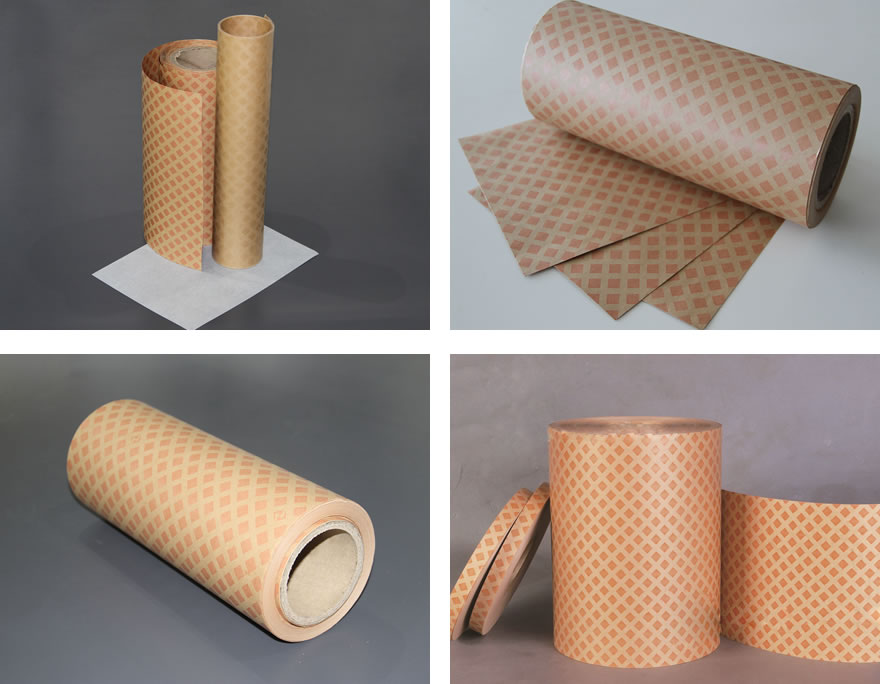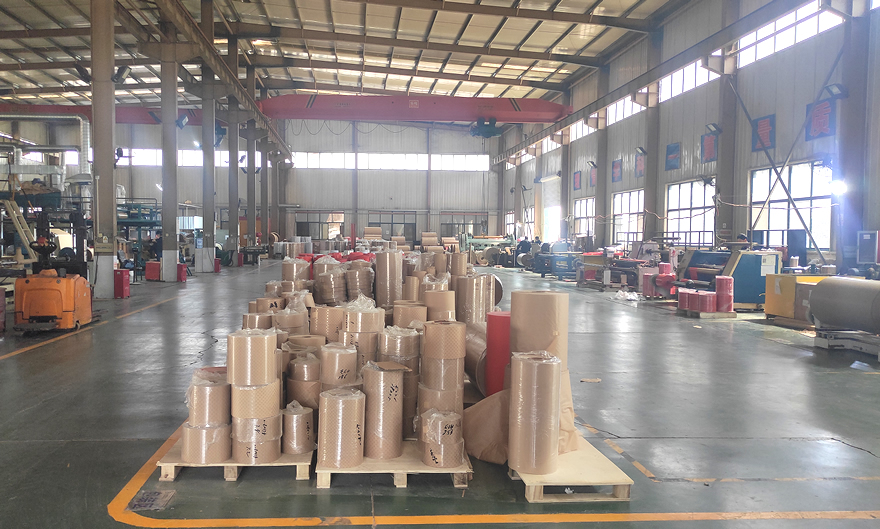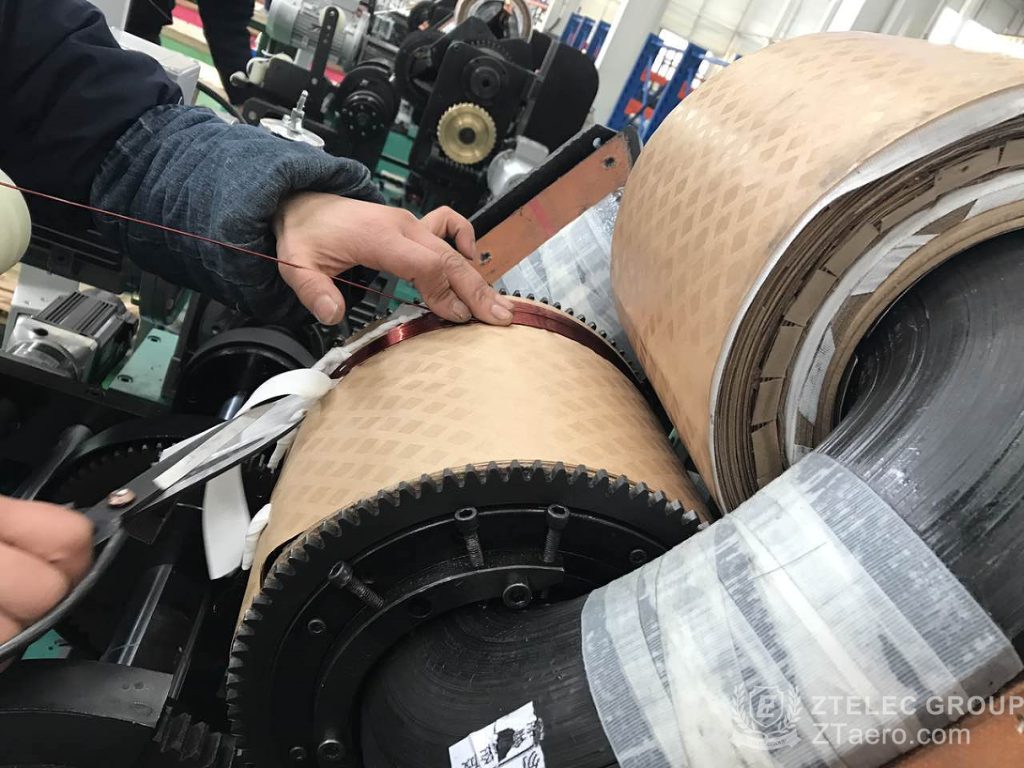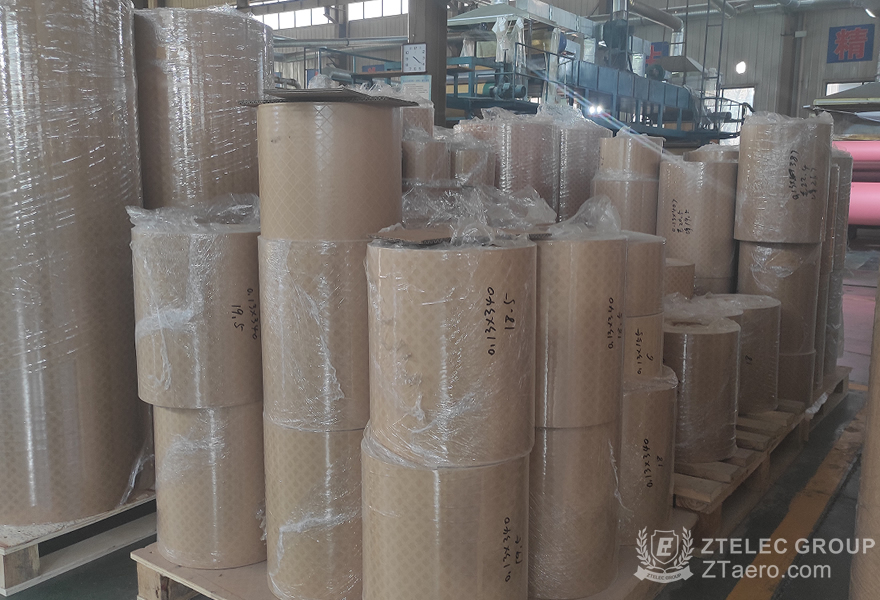Common questions about DDP insulating paper (an aromatic polyamide fiber paper, such as DuPont™ NOMEX® or simil...
Common questions about DDP insulating paper (an aromatic polyamide fiber paper, such as DuPont™ NOMEX® or similar products from other brands) primarily focus on material properties, applications, handling, and potential challenges. Below are some of the most frequently asked questions and their answers:

Common Misconception: Assuming its maximum operating temperature is its UL Temperature Index (e.g., 220°C).
Answer: DDP insulating paper (e.g., NOMEX® T410) typically has a UL Temperature Index of 220°C (Class H). However, this means the material retains at least 50% of its original properties (usually mechanical strength) after 20,000 hours of thermal aging at that temperature. Its recommended continuous service temperature is usually 180°C – 200°C, depending on application conditions (e.g., overloads, cooling). Short-term overload capability can be higher.
Common Misconception: Believing it is completely unaffected by humidity.
Answer: DDP insulating paper has excellent moisture resistance and dimensional stability, with very low water absorption (approx. 5-7%, significantly lower than standard cellulose paper). Its electrical and mechanical properties degrade minimally even in humid environments. However, it is not completely non-absorbent; electrical strength will slightly decrease in high humidity (though still far superior to other materials), and properties recover upon drying.
Answer: DDP insulating paper has very high dielectric strength (breakdown strength), typically 20-40 kV/mm or higher (specific values depend on thickness, test method, temperature/humidity conditions). This is a key characteristic for its use as a high-performance insulating material.
Answer: DDP insulating paper (especially specially treated grades) exhibits excellent corona resistance. In applications like variable frequency drives (VFDs) motors or high-frequency transformers where partial discharge is a risk, its lifespan far exceeds materials like polyester film or epoxy laminates. This is a major reason for its widespread use in modern power electronics.
Answer: DDP insulating paper possesses outstanding mechanical strength, including tensile strength, tear strength, and toughness. It is significantly tougher than regular paper, resistant to tearing (especially along the machine direction), and can withstand mechanical stresses during manufacturing processes like wrapping, folding, and coil insertion in motors and transformers. Its flexibility also makes it easy to form and shape.

Answer: It can supplement or replace mica in specific applications, but it is not always a direct equivalent.
Advantages: Easier processing (no adhesives needed), excellent flexibility, high thermal endurance, integrity, potentially lower cost.
Disadvantages: Mica tape (mica paper + reinforcement + binder) remains the “gold standard” for applications requiring extreme thinness or exceptional resistance to surface discharge (e.g., main insulation in high-voltage motor bars). DDP is often used with mica (e.g., as reinforcement or padding) or alone in medium/low-voltage or corona-critical applications (e.g., phase/slot insulation in VFD motors).
Key Point: Replacement requires rigorous evaluation and qualification.
Answer: DDP insulating paper itself contains no adhesive. Fixing methods include:
Mechanical Fixing: Slot wedges, lacing tape, clamping structures.
Compatible Adhesives: Using suitable high-temperature adhesives (e.g., epoxy resins, polyimide adhesives, silicone rubber). Ensure compatibility and matching thermal class.
Hot Pressing/Molding: Heating under pressure in a mold can cause slight surface melting/bonding (relying on thermoplastic fibers within the paper), forming rigid insulation parts (e.g., slot liners, phase separators).
Answer: Relatively easy to process.
Cutting: Can be cut with sharp blades, scissors, laser cutters, or slitters. Laser cutting provides smooth, fuzz-free edges.
Punching: Can be die-cut; requires sharp, wear-resistant dies, suitable for high-volume production.
Folding: Flexible and easy to fold without cracking.
Note: Processing generates dust (aramid fiber dust); dust masks and cleanliness are essential.
Answer: Possible causes:
Material: Poor edge handling (e.g., tearing instead of cutting) causes fuzz. Low-quality products may have poor interlayer bonding.
Processing Issues: Dull punching dies or incorrect laser settings cause edge melting/charring/delamination. Excessive rubbing or friction causes surface fuzzing.
Application Issues: Abrasion against rough copper wires or stator core slots during coil insertion causes wear and fuzzing.
Prevention: Use high-quality material, ensure sharp cutting tools/correct laser settings, optimize winding/insertion processes.

Answer: DDP insulating paper is a high-performance specialty material. High costs stem from:
Expensive raw materials (para-aramid fiber) and complex manufacturing (fiber production, wet-laid papermaking, high-temperature calendering).
Strict quality control and performance requirements.
High technical barriers and relatively few suppliers.
Answer: Performance differences may exist. Although all are based on aramid paper:
Raw materials (fiber type, length, blend) differ.
Manufacturing processes (papermaking, impregnation, calendering) differ.
Additives (flame retardants, anti-aging agents) differ.
Final product uniformity, mechanical strength, electrical properties, thermal aging resistance, and corona resistance can vary slightly.
Recommendation: For critical applications, changing suppliers requires strict material qualification and type testing; don’t assume “all aramid paper is the same”.
Answer: Available in a wide range; common specs include:
Thin: 0.05mm, 0.08mm, 0.13mm (Commonly used for layer, turn, or padding insulation)
Standard: 0.18mm, 0.25mm, 0.30mm (Most widely used, e.g., slot liners, phase insulation)
Thick: 0.38mm, 0.50mm, 0.76mm, 1.0mm (Commonly used for end-winding supports, blocks, slot wedge packing)

Answer: DDP insulating paper has excellent flame resistance, meeting UL 94 V-0 (typically achievable for thicknesses ≥0.25mm).
Chars in flame but does not support combustion; self-extinguishes when flame is removed.
Produces low smoke density and minimal toxic gas emissions (compared to materials like PVC), ensuring high safety.
Answer: Exhibits excellent thermal aging resistance. Performance degradation is very slow within its rated temperature range. Its UL Temperature Index of 220°C demonstrates long-term stability at high temperatures. Far superior to standard organic insulating materials.
Answer: Has good chemical resistance:
Highly resistant to most organic solvents (alcohols, ketones, aliphatic/aromatic hydrocarbons, esters, transformer oil).
Good resistance to weak acids and weak alkalis.
Caution: Strong acids, strong alkalis, and some strong oxidizing agents can cause damage. Long-term exposure to certain refrigerants or specific chemicals requires careful assessment.
Answer: Recommendations:
Store in a cool, dry environment.
Avoid direct sunlight and excessive heat.
Keep flat to avoid permanent deformation or creasing from heavy loads.
Protect from dust and moisture (while moisture resistance is good, prolonged extreme humidity is still undesirable).
Answer: The most common is the iconic “NOMEX® gold” (natural color). However, depending on the manufacturer and specific product grade, it may also be:
White (with added white pigment/dye for high visibility or specific aesthetics).
Black (with added black pigment, possibly for specific shielding or appearance requirements).
Natural (lighter than the characteristic gold).
| Question Category | Core Points |
|---|---|
| Temperature Resistance | UL 220°C (20,000hrs), Recommended continuous service temperature 180-200°C. |
| Moisture Resistance | Excellent, low water absorption (~5-7%), stable performance when wet, recovers upon drying. |
| Electrical Strength | Very high, typical values 20-40+ kV/mm. |
| Corona Resistance | Excellent, a key advantage for insulation in variable speed drive equipment. |
| Mechanical Strength | Outstanding: tough, tear-resistant, flexible, withstands processing stress. |
| Replacing Mica | Can replace in some applications; requires strict evaluation. Often used with mica or for MV/LV/corona-critical areas. |
| Bonding/Fixing | Requires mechanical fixing, compatible adhesives, or hot pressing/molding. |
| Processability | Relatively easy to cut (laser preferred), punch, fold. Note dust control. |
| Delamination/Fuzzing | Caused by poor material, dull tools, incorrect laser settings, process friction. Prevent by choosing quality material, sharp tools, optimized processes. |
| Cost | High, due to expensive raw materials and complex process. Cost of high performance. |
| Brand Differences | Exist; changing suppliers requires strict qualification and testing. |
| Flame Resistance | Excellent, UL 94 V-0, non-supporting, low smoke & toxicity. |
| Aging Resistance | Excellent, slow degradation within rated temperature. |
| Chemical Resistance | Good: resists most solvents, oils, weak acids/bases. Avoid strong acids, alkalis, oxidizers. |
| Storage | Cool, dry, dark, flat, protected from dust/moisture. |
| Color | Primarily gold/yellow; also white, black, natural variants. |
Specific Selection: When choosing DDP insulating paper, always base the decision on specific application requirements (voltage level, operating temperature, environmental conditions, mechanical stress, corona resistance needs, dimensions) and refer to the manufacturer’s detailed technical datasheets.
Qualification & Testing: For critical applications (e.g., rail, aerospace, renewable energy), materials typically need to pass specific industry or customer qualifications (e.g., UL, IEC, EN, railway standards) and rigorous type tests.
Consult Experts: For complex applications or uncertainties, consult the material supplier’s technical support engineers or insulation system design specialists.
Understanding these common questions helps in correctly selecting, using, and handling DDP insulating paper to maximize its high-performance benefits and ensure the long-term reliability of electrical equipment.
If you are interested in our products,, please send us a message and we will contact you as soon as we receive it. Email: info@ztaero.com whatsApp: +8616650273778